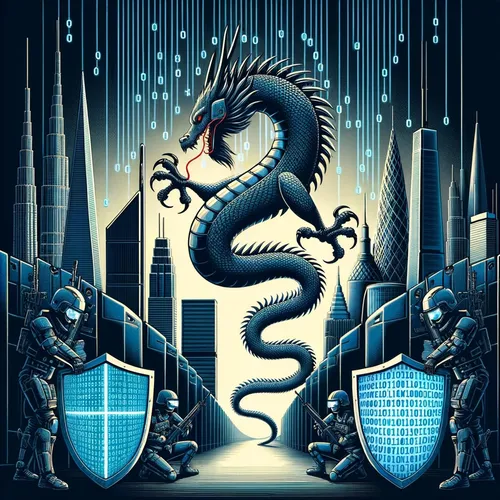Silk Typhoon Strikes: Zero-Days, Backdoors, and Mandarin Leaks Oh My
- Author
- Quiet. Please
- Published
- Sun 24 Aug 2025
- Episode Link
- https://www.spreaker.com/episode/silk-typhoon-strikes-zero-days-backdoors-and-mandarin-leaks-oh-my--67497626
This is your Dragon's Code: America Under Cyber Siege podcast.
Listeners, it’s Ting here—your friendly cyber dragon spotter—with the latest scoop on Dragon's Code: America Under Cyber Siege. Buckle up, because this week the Silk Typhoon APT, China’s fast-evolving cyber army (also known as Murky Panda to the CrowdStrike crowd), turned up the heat under US infrastructure. Think coordinated campaigns aimed at the juicy middle: energy grids, telecom switches, and municipal support software.
Let’s jump right into the juicy bits. The Silk Typhoon crew’s calling card? A mix of zero-days and n-days—those are previously disclosed vulnerabilities but not yet patched in many targets. Their most eye-catching feat was leveraging CVE-2025-43300, a zero-day that hit Apple’s iOS, iPadOS, and macOS platforms. This let operators slip into devices used by infrastructure engineers to access sensitive control centers. CISA’s Kevin Mandia described the exploit as “scalpel-precise,” letting attackers establish persistent backdoors without tripping standard alerts—like an elegant ghost walking through Tripwire lasers at the Louvre.
On the municipal front, hundreds of US cities that use Workhorse Software’s accounting apps woke up to panic when CERT/CC disclosed serious data exposure flaws. Sting like a dragon: this after-the-fact disclosure means these bugs might’ve already served as Silk Typhoon’s foothold, letting attackers pivot laterally to disrupt utility payments and even emergency response comms. That’s the thing with Chinese APTs—they savor indirect entry points.
Attribution came fast, thanks to overlapping malware code and unmistakable command-and-control infrastructure. Analysts at Microsoft and CrowdStrike noticed the traffic patterns matched Silk Typhoon signatures, and—icing on the forensic cake—deeper packet captures caught Mandarin operator commands that unwittingly leaked through proxy hops.
US response? The White House launched secure image rollbacks on iOS fleet devices and updated Watchtower-level monitoring over all Apple endpoints in critical sectors. At the Department of Homeland Security, Jen Easterly called for “instantaneous log aggregation and AI-aided anomaly alerts,” a level-up few local utilities were truly prepared for. The FBI even hosted an urgent operator workshop in D.C.—because when Chinese hackers are testing delay-coded payloads and destructive backdoors (hello, Hakai malware, anyone?), there’s no time for bureaucracy.
Cybersecurity experts like Katie Moussouris emphasized that Silk Typhoon’s real art is camouflage—using legitimate tools and time-delayed triggers to cause damage when defenders are off-guard. Her advice for next week: stop treating patch management like spring cleaning and make it part of every breakfast routine.
And maybe the most important lesson hammered home by both CISA and private sector experts: never assume your VPN or OS update is actually up-to-date, and don’t let compliance lull you—active threat hunting is the name of the game. Because when it’s America vs. Dragon, nap time is over.
Thanks for riding this byte-sized blitz with me. Be sure to subscribe so you don’t miss the next episode of Dragon’s Code: America Under Cyber Siege. This has been a quiet please production, for more check out quiet please dot ai.
For more http://www.quietplease.ai
Get the best deals https://amzn.to/3ODvOta
